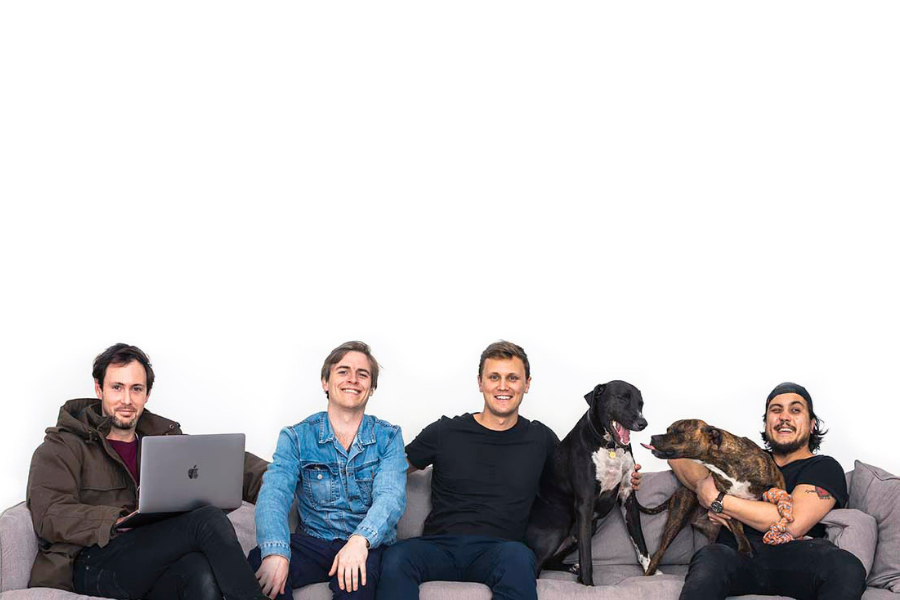After a small initial shipment, our second shipment of couches arrived, and everything has started to get pretty real – orders have been going out for three weeks, and revenue has grown by 3x each week. It’s been about a year and a half since picking up tools on Companion Couch with Andrew Hambly, and a lot has happened in that time.
Companion Couch wasn’t always Companion Couch. The first name was Hutch Couch, based on the little comfy spot that rabbits sleep in. However, Hutch was jettisoned pretty quickly as we realised that a hutch is typically in a cage -not the first thing you want to think about when you’re buying furniture.
We had speculated that furniture might be a good market to bring online. There are a lot of companies selling furniture online, but not many of them had improved the customer experience beyond being able to avoid a phone call or coming into a showroom with a basic website. There were companies that were changing this but they were in the mattress space. We investigated.
An Aussie mattress company we loved early on was Koala. They offered a 120-day trial, free delivery and free returns, much in the same vein as Casper (US) and Simba Sleep (UK). They also ‘sponsored’ a koala each time a mattress was sold. Fantastic. These all sounded like good examples of how the ecommerce space was innovating with the customer experience.
Andrew wanted to test the designs. He had recently read ‘Lean Startup’ by Eric Reis and was ready for some customer feedback. I had no idea about furniture design, so I thought it couldn’t hurt. Several Facebook surveys gave us a bit of a better direction, so Andrew got on the computer and knocked up a phenomenal design.
While Andrew had experience in importing from overseas in his previous business designing shipping containers, he hadn’t ever had to deal with the complexities of a piece of furniture. There are so many variables, from look to construction and presentation, among many others. My mind kept darting back to the time I spent a year building an app, only to get to the end without having a working product. We desperately wanted to avoid repeating this.
We had initially played with the idea of adding a charging dock to the design, for example. So we needed to learn – quickly – about all the certifications and regulations around importing electronics. We seemed to hit the same steep learning curve with just about everything.
Etienne came onboard in February as I was having trouble getting the website to look exactly like how I pictured it in my head. Etienne is now our Creative Director, responsible for everything ‘pretty’, from the animations to the design of each page on the webpage.
We took a bit of a risk taking on an employee before hitting break even, however I’m now convinced that hiring a visual graphics whiz was probably one of the best decisions we’ve made. He manages shoots for us, and helps us get the most out of our awesome agency Entropico.
He helped us to understand how important visual design is in ecommerce, and we’re light years ahead of where we would have been without him.
Another great tip I have for creating a successful product business is to have a cracking designer onboard that knows their stuff. In a previous business I had spent a lot of time and money with a developer to end up with a piece of tech that didn’t really work the way it needed to.
This taught me that, regardless of what you’re trying to make, if you don’t know how to speak the language of the person making it (ie code or design thinking), you could be completely misunderstanding each other – and this can end up a costly mistake.
Andrew was able to audition manufacturers, and used his personal knowledge to suggest that we use the most expensive option available, because he asked the right questions. I knew from experience that often the cheapest option can end up being more expensive in the end, and it was a company-making decision in itself, so we went for it. Choosing the right manufacturer was an existential problem for us, but having the right man on the job saved us utterly.
My last bit of advice is around the transformative power of brand. We’re lucky, as we’ve had the experience of working stupid hours on campaigns for clients like McDonald’s and Volkswagen, but the experience of creating a brand and starting to see it work is quite another thing altogether.
It makes all the clever things you’ve done on product look even better, and allows customers to feel comfortable enough to make a purchase. We followed the ‘if it delights us, then surely it may delight others’ angle in the end. Testing everything got onerous quickly. Eric Reis – I think you got a lot of things right about developing a product – but brand seems to be more intuitive.
Joe Greathead is cofounder of Companion Couch.
Image: the Companion Couch team. Source: Supplied.




















Trending
Daily startup news and insights, delivered to your inbox.